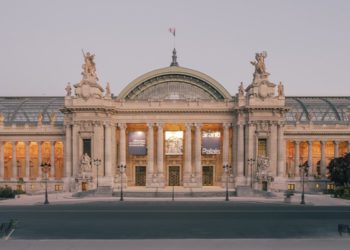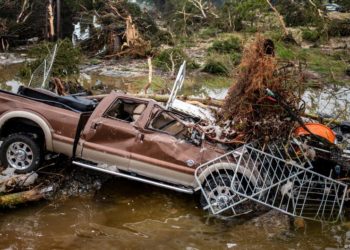At some point, I’m not sure exactly when, I began to greet the people I encounter on my walks. There is the runner in the park. The trio of women I see together many days. The couple on their constitutional. Such interactions may be brief — a nod, a smile, a light “good morning” — but they are not without meaning. For me, they represent the fiber of community, which expresses itself most fundamentally in the comfort of routine.
Routine. Such a concept seems almost quaint, if not nostalgic, given how distant from it we find ourselves. With last month’s wildfires, the zone-flooding in Washington, the specters of climate change and economic instability, it’s easy — natural, even — to feel overwhelmed. And yet, if this is the world we occupy, we have to figure out a way to cope with it. We have to get out of bed each day and keep on keeping on.
I think of the Red Cross disaster specialist who once described to me what he referred to as “healthy denial.” Amid potential disruption and disaster, he suggested, the only reasonable response was to prepare and then … continue with our lives. Not as a means of deluding ourselves but, when confronted with so much that is beyond our ability to fix or change, as a strategy to remain sane.
This is why I walk most mornings — not only as exercise (although that too) but because a daily connection to Los Angeles, to my neighborhood, is a routine that enables me to cope.
Take those people I greet when I am walking — I don’t even know their names. We passed in silence for months, years even, before I began to acknowledge them. Or before we began to acknowledge one another, I should say.
That’s the key, the back-and-forth of it, the understanding that we share space. In some small way, I am reassured each time I see them, as if a fundamental aspect of belonging were reaffirmed. In a world that has become increasingly threatening, that small connection represents a necessary corrective. It reminds me that however isolated I might feel, I also exist as part of a community.
Despite how its detractors misread it, Southern California is composed of a web of neighborhoods, of cities within the city, of unincorporated areas, a mosaic of microclimates and identities. It is, in other words, a region full of character, fiercely claimed and nuanced, not undifferentiated “sprawl.” We may call this place Los Angeles, but as the fires in January delineated, it is not a monolith. Its component parts include Pacific Palisades, Altadena, Malibu, Mandeville Canyon, the Hollywood Hills. Also so much more.
In Mid-City, where I live, that means pavement and potholes, broad boulevards (I often walk north past Olympic to Wilshire) where large buildings abut narrow side streets packed with duplexes and four-plexes. “The plains of id,” Reyner Banham called it in “Los Angeles: The Architecture of Four Ecologies,” a label I apply with pride. What Banham is suggesting is that even in the most developed corners of the city, much of real life takes place in the nooks and crannies. It’s all about the sense of scale.
That’s what keeps me grounded as I walk the neighborhood, following the same route nearly every morning, checking that it all remains in place and these days aware of my good fortune amid so much that has been lost.
This “all” includes the people I encounter, the ones I recognize. The runner, the women, the couple. Although we have never introduced ourselves to one another, their presence feels reliable: a consolation, in the larger city that surrounds us, its anonymity.
Does my presence mean the same to them? I’d like to imagine that it does. I’d like to imagine that they look for me just as I look for them, that this bestows a similar comfort.
Everything changes; we can count on that. Everything we know will one day disappear. Los Angeles will be living that reality for years to come after the fires. In the short term, though, we can find some constancy, however fleeting. Something on which — for the moment, anyway — we can depend.
For me, this is the benefit of my routine. Of paying attention to what I pass and who I see. Rather than lulling me into autopilot, I am reminded, as I walk, to take each moment, each encounter, on its own terms, beginning with my neighbors.
David L. Ulin is a contributing writer to Opinion.
The post Why I walk L.A.’s ‘plains of id’ every day appeared first on Los Angeles Times.




